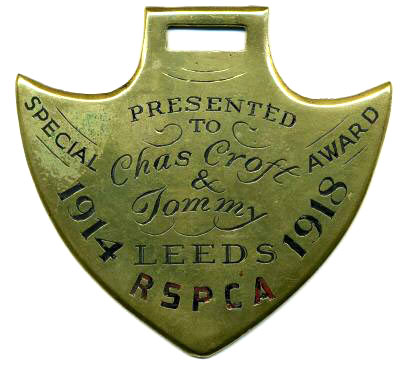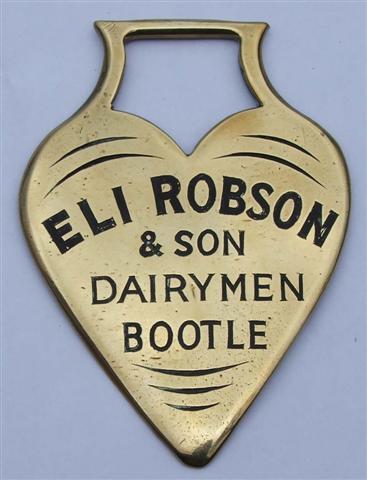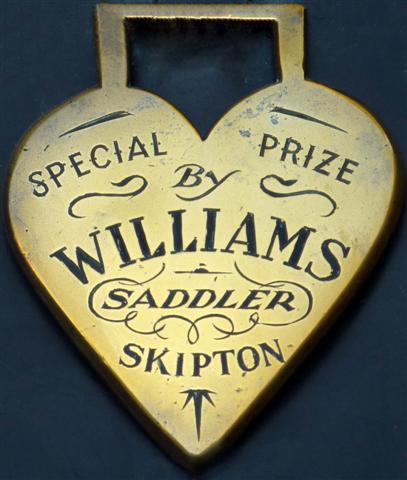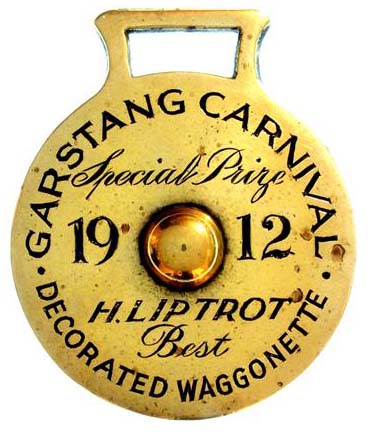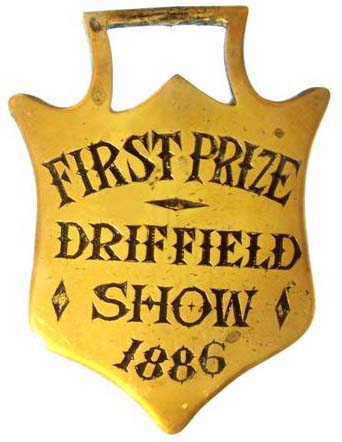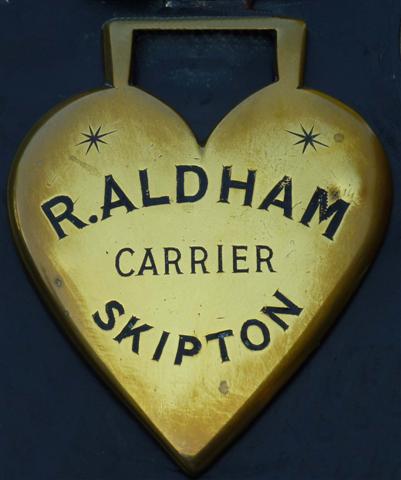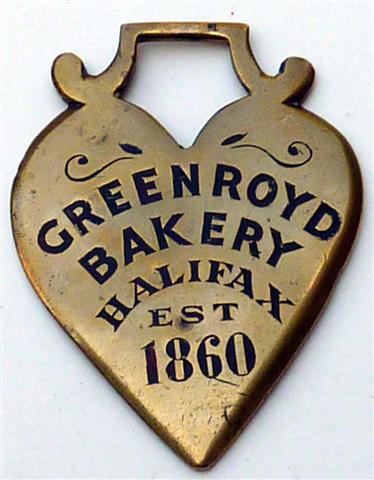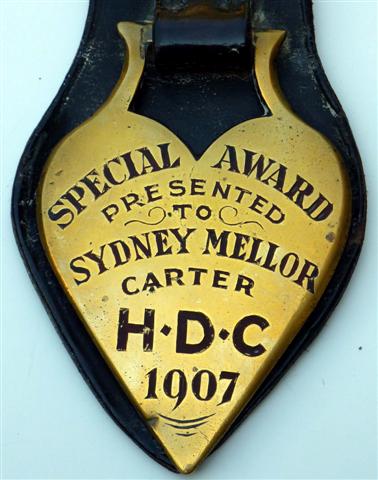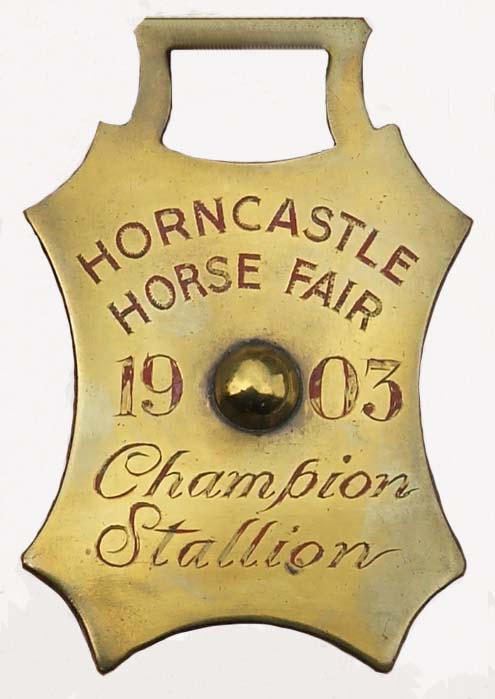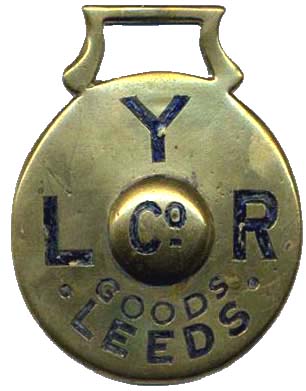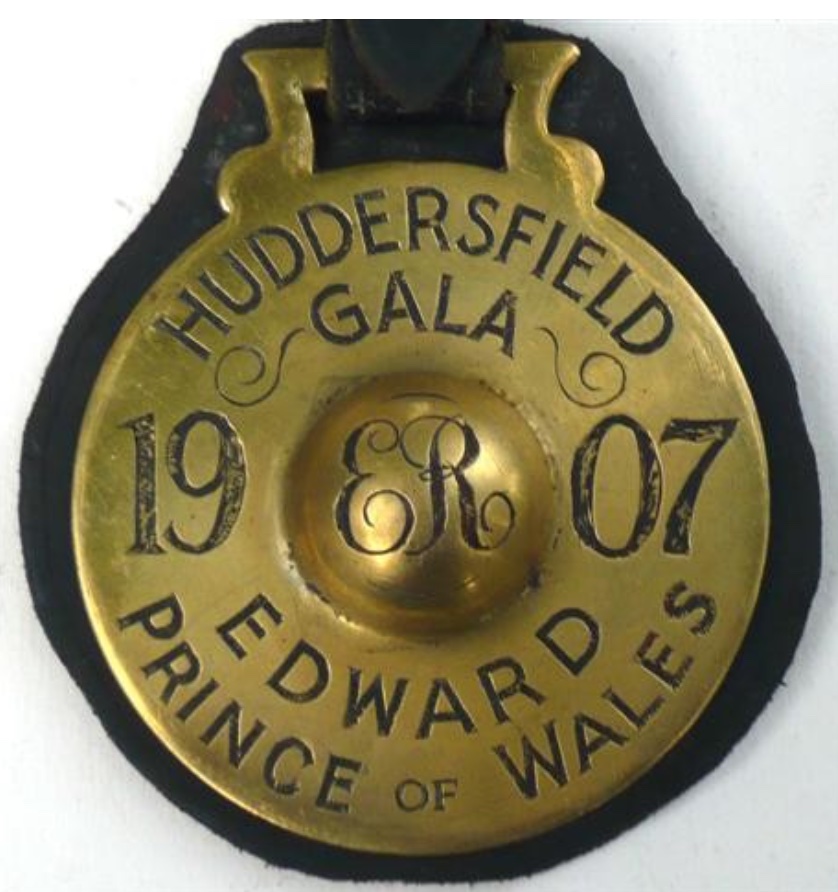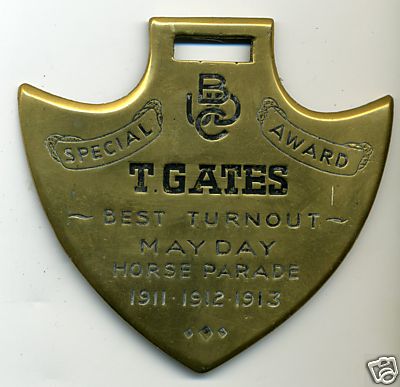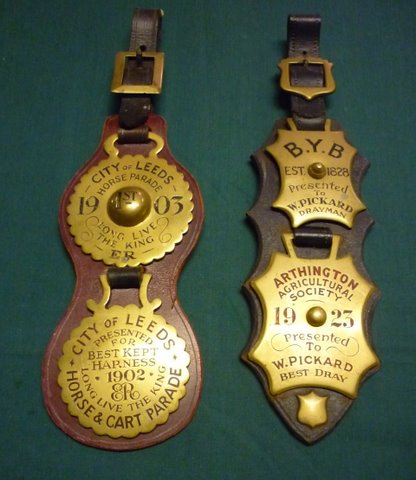Fake, Spurious or otherwise “Unauthenticated” Brasses
It has to be said that this article is not necessarily the opinion of the society as a whole. However the title of this topic was carefully chosen to cover a grey area which to a greater or lesser extent can be found in all branches of collecting, particularly where rarity of an object involves accepted value and becomes a means of making money. Our ‘hunter gatherer’ instinct at its best creates healthy and good-natured competitive spirit but at its worst can drift into resentment or worse.
Horse brass collecting as a hobby rather than for the sole purpose of decorating harness began towards the end of the 19th century encouraged no doubt by the ‘souvenir’ aspect generated by the large number of brasses manufactured for Queen Victoria’s two Jubilees. Articles began to appear as early as 1911 in ‘The Connoisseur’ magazine and in 1916 H R Carter wrote in the same magazine of the existence of forgeries. Until the advent of the NHBS, H S Richards’ three volumes of ‘Horse Brass Collections’ became the popular manual for horse brass collectors and his one-line commentaries on the hundreds of brasses illustrated highlighted those that he considered as spurious by the single word ‘fake’. In 1975 when Terry Keegan founded the NHBS the popularity of horse brass collecting was on an all time high and prices were steadily rising. The society rapidly grew to about 500 members which co-incided with a small group of collectors creating what we now call a scam, centred in Yorkshire and aimed at selling to unsuspecting collectors falsely inscribed old original plain ‘sun flash’ brasses purporting to have been awarded as prizes at various horse parades and shows, galas and ploughing matches particularly in the Yorkshire and Lancashire areas. These also included pre-grouping railway company brasses, dairyman brasses, and brewers’ and saddlers’ brasses. They covered dates ranging from the 1890s to the 1920s.
Early examples of their work tended to be less elaborate and at the time seemed to particularly target railway and dairy related items.

As well as horse brasses, other items of metalware such as railway lamps and oil cans, milk cans and other dairy utensils began to appear, enhanced by appropriate added writing. As the practice grew and for as long as authenticity remained unchallenged more and more elaborate fakes were supplied to unsuspecting collectors who were paying very high prices for them during the 1980s and ‘90s and these only began to be challenged as collections came onto the market at dispersal sales and collectors were able to examine and compare numbers of these spurious brasses in detail. It soon became obvious that many of these brasses appeared to have recognisable similarities to each other suggesting that they were the products of one engraver’s hand with the same signature embellishments such as small stars and flourishes, style of lettering and inscription. The quality of engraving was superb, beautifully designed and arranged in the various brass patterns being used. In short they were ‘too good to be true’. It is understood that the perpetrators employed a retired engraver to whom it would have been just another job.
The dates engraved on the brasses did not always match the age of the ‘host’ brass. The harness wear did not match the ‘freshness’ of the engraving, which was sharp and showed little or no aging at all. It was becoming more and more obvious that something was not right. In NHBS Journal number 48 of June 2000 a swinger and hanging brass purporting to have come from ‘Shepherds Dairy of St Johns Street, Halifax’ were exposed as fakes in a very well written article.
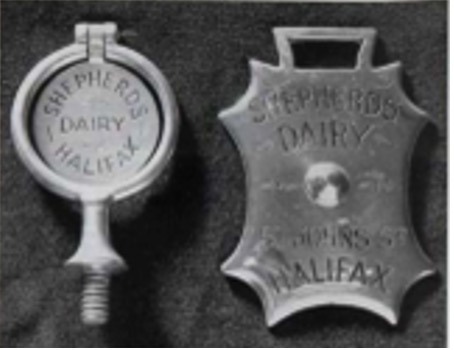
Other collectors now came forward who had also been caught by the same scam and the committee decided to create a photographic dossier of as many examples of these brasses as possible and invited the permission and help of the membership in an attempt to regulate the market. By this time the alleged perpetrators had mostly disappeared and had either died or given up collecting. Some who had joined the society were no longer members. In 2013 the Society published the first of its booklets ‘All About Engraving on Horse Brasses’. It offered almost full size photographs of 56 engraved brasses, the majority of which have been identified as fakes originating from the ‘Yorkshire Scam’. A few however are still considered by many collectors to be genuine and not from the same stable. A second volume was published in 2015 as the dossier of known examples increased. Again 56 examples were shown bringing the total to 112. These two volumes were issued without individual comment, the reader being introduced to the subject through a short foreword in each. Now ten years on examples are occasionally offered for sale but in general they do not sell for the large sums of money that changed hands previously. The NHBS seems to have achieved its aim and it seems unlikely that such a large operation could ever be successful again. It is also unlikely that it will ever be established just how many of these brasses were produced but today’s collector is better informed and the Society’s advice on the subject when confronted by such a ‘choice’ brass for sale is.
1) Always ask for a written receipt.
2) Always insist on a money-back guarantee.
3) If the above are not forthcoming, then use your instinct and ask yourself why and if you are still not sure, walk away.
A group of spurious brasses selected from the 112 illustrated in the society’s two booklets mentioned above, see also section on stamped brasses:
